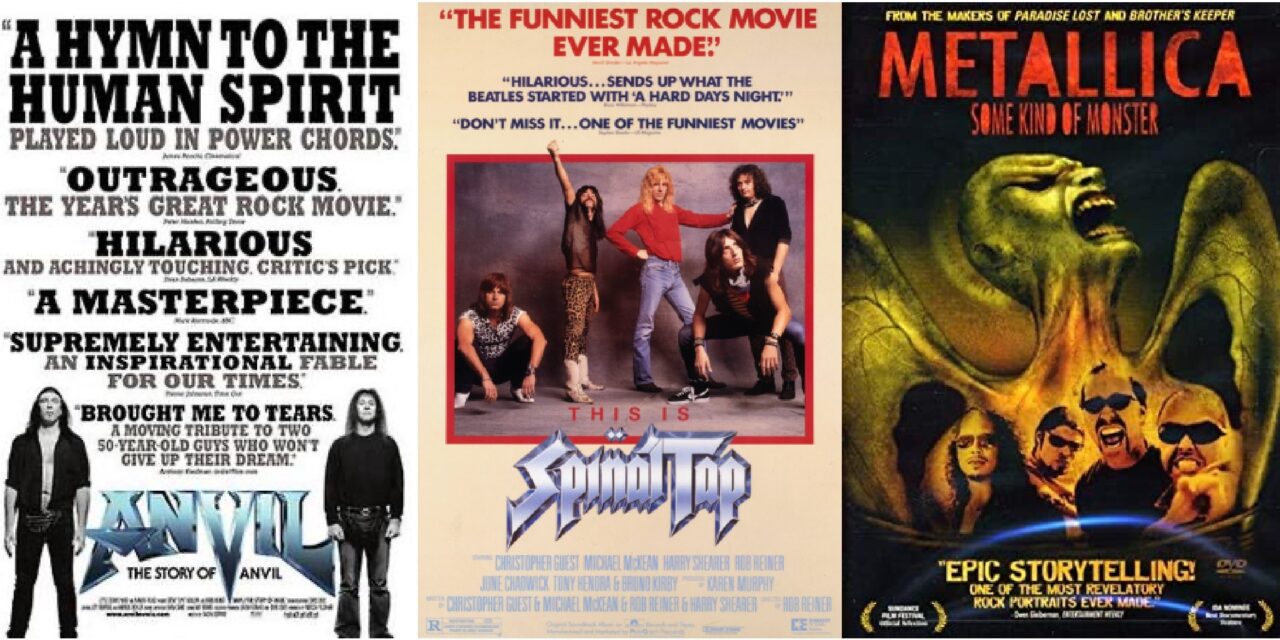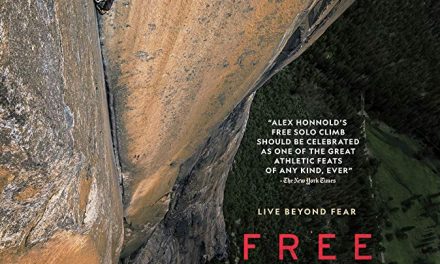“You would think if you were a heavy metal band looking to make a documentary, that the first agenda item at the planning meeting would be, ‘we can’t allow ourselves to look like Spinal Tap’”. – Leaping Larry L, 3RRR Broadcaster upon the release of Metallica’s 2004 documentary, Some Kind of Monster
I’m sure acclaimed director Rob Reiner, whose films include the commercial successes Stand by Me, When Harry Met Sally and A Few Good Men, wouldn’t have expected that the creation that has had the longest cult following would be his first, the seminal ‘mockumentary’, This is Spinal Tap from 1984.
The story of Britain’s loudest band’s disastrous tour of the USA satirises some of the biggest clichés from UK heavy metal bands in the 70’s. The songs, behaviours, speech, wardrobes, it’s all there in cheesy glory.
From prehistoric monuments on stage that are mistakenly built to the wrong scale and are in danger of being crushed by a dancing dwarf, to Nigel Tufnel’s guitar solo utilising a whole violin as opposed to Jimmy Page using a violin bow in Led Zeppelin’s film, The Song Remains the Same, the references keep coming.
Then there is the inimitable break up between the two main stars, Tufnel and David St Hubbins ala Lennon/McCartney, due to the appearance of the Yoko Ono-like form of St Hubbins’ girlfriend, Jeanine.
Jeanine then becomes manager after the cricket bat-weilding manager Ian Faith resigns (Led Zeppelin’s notorious manager Peter Grant carried a cricket bat) and then books the band into a couple of the worst gigs ever. One at an Air Force base which produces a superb cameo from the late Fred Willard and another at an amusement park where they play undercard to a puppet show.
The three main Spinal Tap actors, Christopher Guest, Michael McKean and Harry Shearer who plays bassist Derek Smalls have all had fine careers since, and were supported handsomely from a huge list of famous and not so famous cameos.
This is one of the most famous scenes where Nigel takes documentary maker, Marti Di Bergi (Rob Reiner) on a tour of his guitars and amps.
What makes Metallica’s Some Kind of Monster so compelling is that it was originally supposed to be the filming of an album’s production and then converted into two, sixty minute infomercials to promote it.
Two years later, we see lead singer James Hatfield self-destruct and attend rehab, bassist Jason Newstead leave due to the band’s loss of focus and continual law suits against the streaming service, Napster and the introduction of a so called high performance psychologist, Phil Towle.
In the most bizarre scenes in the film, Towle who doesn’t even have formal qualifications, takes these dysfunctional, mega rich, rock stars through all day workshops, insisting the lads unleash their inner feelings.
All the while, Towle wears what looks to be one of those Jenny Kee multi-coloured jumpers that Kath and Kel Knight bought duty free at the airport. Add to that the $40,000 he was getting paid a month and the documentary becomes more ludicrous by the minute.
The auditioning for a new bassist is genuinely interesting and when they tell the winner Robert Trujillo that his base salary is $1m plus royalties, he very nearly spontaneously combusts.
I have friends who like Metallica and they know my feelings, in particular towards the drummer Lars Ulrich, who I find is a greedy and annoying individual. He likes to dominate this film and is like a mosquito in the night buzzing around your ear intermittently.
No matter how many times you smash your ear in the dark, only concussion will avert that constant interference. That’s how I see Ulrich. It’s always about the money with him, like when he hands over his personal art collection to Sotheby’s because he’s bored, subsequently pocketing another $2m.
Metallica are not Motorhead or Black Sabbath, in fact there’s nothing dark or menacing about them. Their most famous song Enter Sandman is about as intimidating as my late Mum saying “night,night, don’t let the bed bugs bite”
To the band’s credit they allowed this warts and all expose to be published for our enjoyment. This is pure Spinal Tap, but with a net worth of close to $1 billion.
On the other side of the coin is the superb and heartfelt documentary The Story of Anvil from 2008. Director Sacha Gervasi is a life long fan of the band who hail from Canada and were a headline heavy metal band in the early 80’s.
Unlike their peers of the time, such as Bon Jovi and Whitesnake, Anvil were left behind. Gervasi tracks them down in freezing Canada where the two surviving members and best friends, guitarist Steve “Lips” Kudlow and drummer, Robb Reiner are working in children’s catering and construction respectively.
Both are keen to re-establish Anvil after having made twelve albums over the journey and they suddenly get a letter from a European fan named Tiziana who has promised a European tour including festivals whereby they could earn significant coin.
The similarities to the final dates of the Spinal Tap tour are uncanny. The tour is an unmitigated disaster. The boys return to Canada after five weeks having earned no money whatsoever and with wives and kids to maintain.
They then contact the producer of their most successful album Metal on Metal in the UK and send him a demo tape which he sees potential in. The only catch is, it will cost 13,000 pounds to produce over four weeks.
There’s an excruciating scene where Lips tries telemarketing sunglasses for zero sales in an effort to raise the money but in the end they borrow it from his sister.
The relationship between the two musicians throughout the recording process is tenuous at times and pushes these two gentle and kind men by nature, to breaking point.
This is a film much more than heavy metal. It is very much a love story between two guys who are lifelong friends and their love for their music and families. It’s a truly authentic and beautifully made documentary.
Like Spinal Tap, the band finish with a successful tour to Japan to promote their 13th album and since the documentary, have been in demand once again.
The Story of Anvil won a number of awards and only has one flaw. Lars Ulrich turns up to tell the world how Robb Reiner’s drumming influenced him. Where’s the Mortein when you need it?




